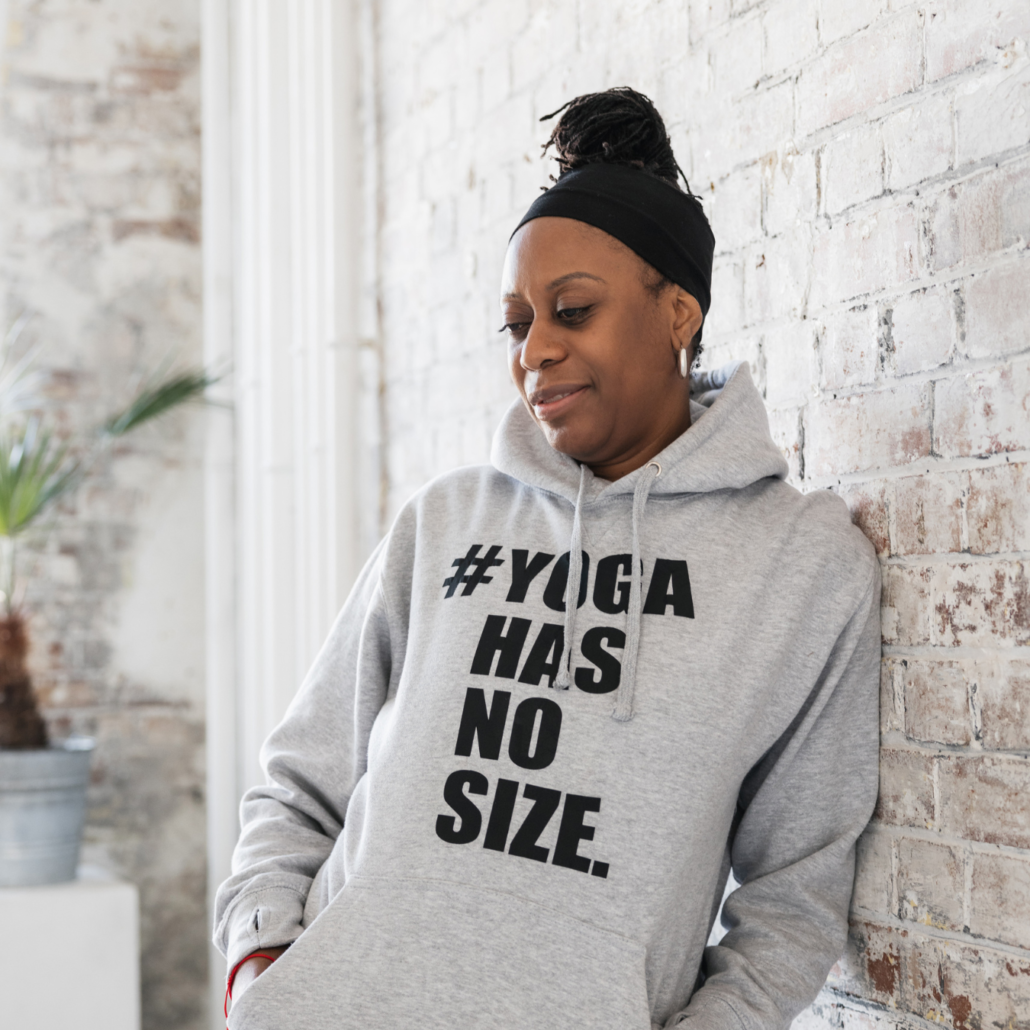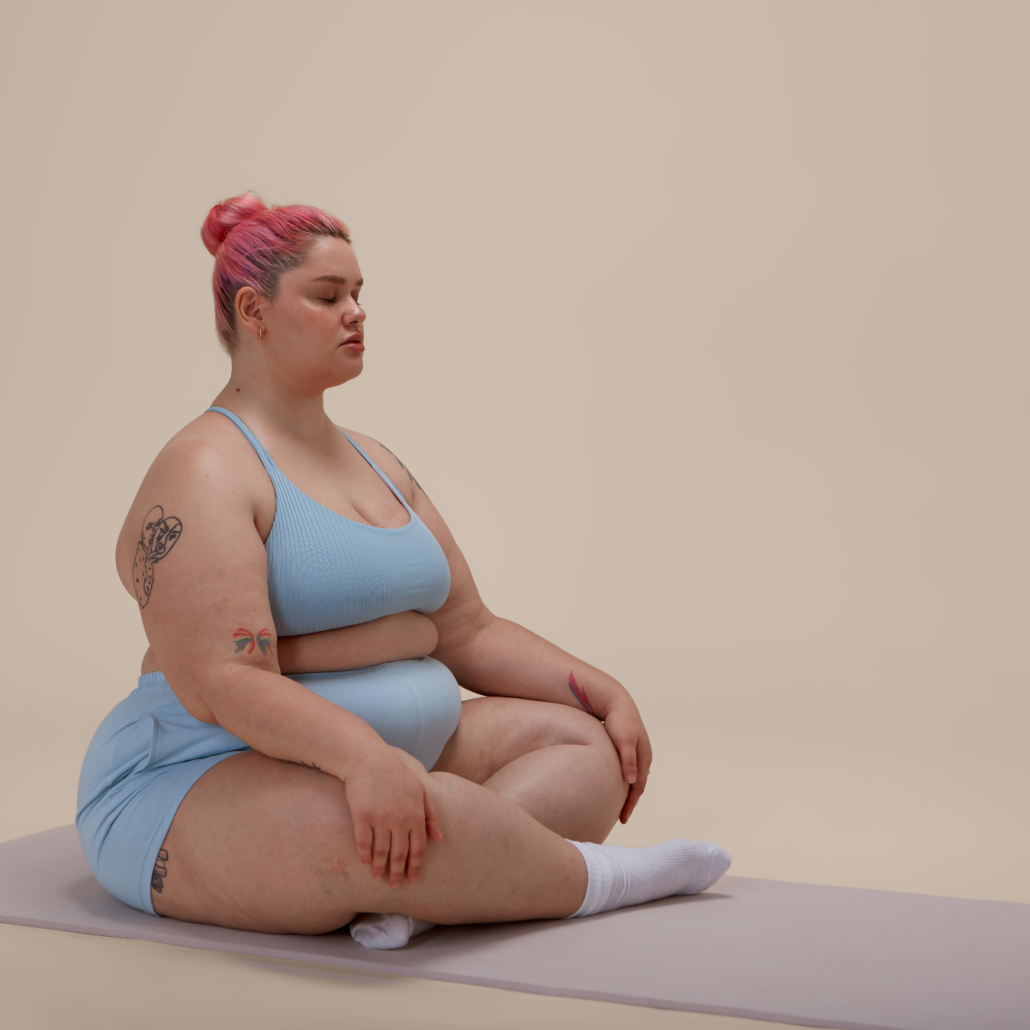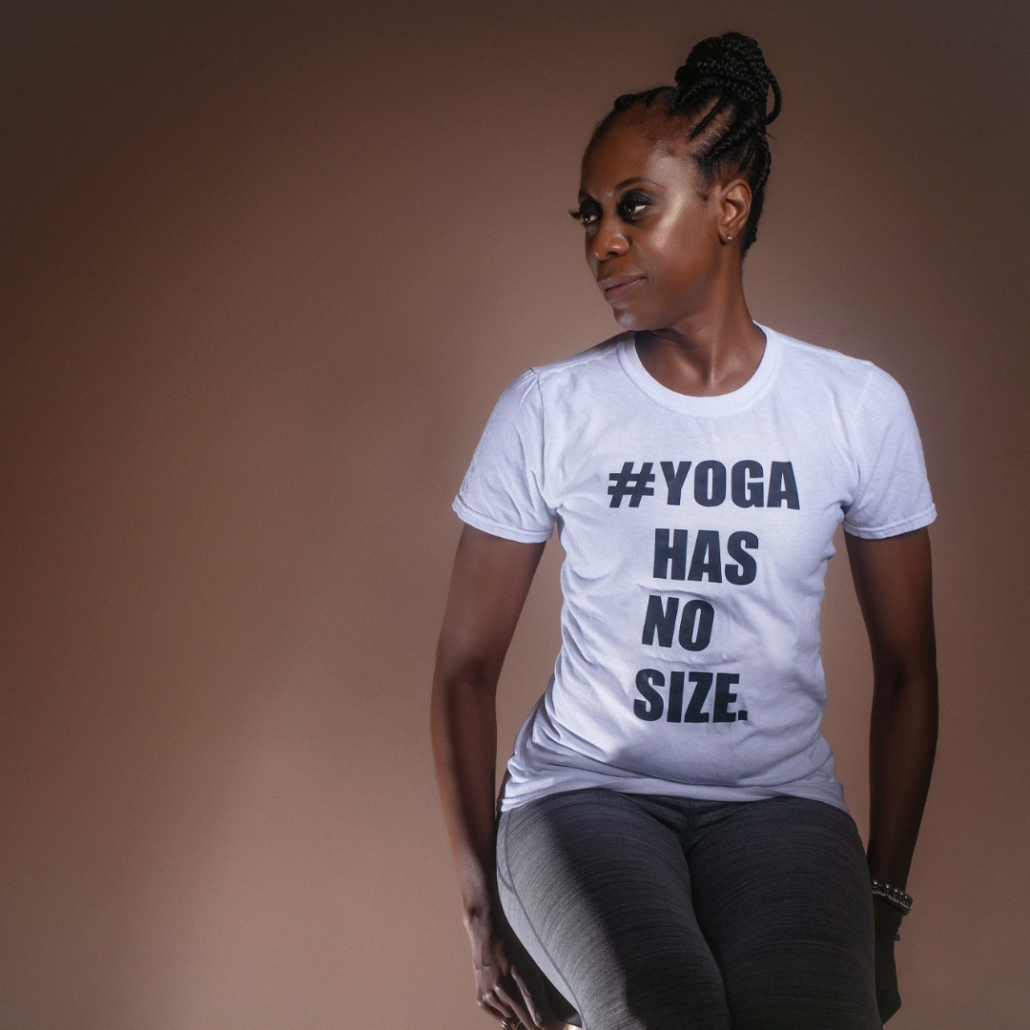Last Updated on August 15, 2025 by Laura Jensen
Are you looking for ways to make your yoga classes more inclusive and welcoming?
As a yoga teacher, fostering an environment of acceptance is essential. Not only will it help the people in your class feel safe and supported, but it can also bring fresh ideas and new perspectives into the practice.
In this blog post, founder of Curvesomeyoga, Donna Noble, shares five ways you can make your yoga classes more inclusive. You’ll come away knowing you can make everyone feel like they belong regardless of their age, body shape, or anything. As Donna says “Every body is a yoga body.”
Whether you’re just starting out as a yoga teacher or have been teaching for years – these tips are sure to prove helpful!
1) Create Safe, Judgement Free Spaces
Attending a yoga class can feel especially vulnerable for beginners. That is why it is important to create a safe, judgement free space for everyone where they can come as they are and just be. You can do this by:
- Ensuring students are treated with the respect and love that they deserve.
- Give them assurances that there’s no need to try and be perfect.
- Respect their personal space and boundaries.
- Remember their names and greet them into every class.
- Take extra time to welcome newcomers and explain the class structure.
These small things can make a huge difference to someone’s class experience.
2) The Importance of Language
How you use language can heal or harm or make students feel that they do not belong.
In my book Teaching Body Positive Yoga: A Guide to Inclusivity, Language and Props, I explore Appropriate Language and how this impacts class goers.
Here’s a short excerpt:
“The words we use carry certain connotations and emotions. We should pick them carefully because they can define us and create a lasting impression. The words we speak carry so much fragility and yet so much weight. They form one of the fundamental ways in which we communicate and reveal so much about who we are and what we stand for. Since the dawn of time, words have provided us with a way to form connection or division. There are so many paradoxes with language, and people may understand words differently depending on societal factors. We can also unintentionally reveal things about ourselves through our words.”
Considering how you communicate to your students is important when it comes to bringing more inclusion to your classes.
Have you considered whether the language you chose is supportive or limiting your students?
Are the words being used placing judgement on a student’s abilities?
3) All bodies are to be celebrated
Normalising all body types within the yoga space helps students find freedom within their bodies and their practice.
The student is always in charge of their body and experience. It should never be about the teacher. The students know their bodies best – in fact, they are the experts, their own gurus.
This means be aware of any unconscious bias based or stereotypes about what someone can do because of their age, size, gender, ethnicity or ability.
Everyone’s pose will look different because we’re living in different bodies with different challenges. Encourage students to trust their knowledge of their bodies.
Always remember, not all injuries or disabilities are visible.
Be prepared to go off script so that you are able to teach to the bodies in the room in front of you. Be prepared to offer options and variations of the yoga poses.
4) Props or not to prop
The use of props should be normalised as these make the poses more accessible and will help to remove the negativity surrounding their use. Get creative with props! You could explore yoga bricks, chairs, walls, and more!
Encouraging the use of props can be achieved if you as the teacher use the props as the students invariably do the same. This allows you to be more inclusive to the diverse abilities and body needs.
It should also be remembered that props can also make the poses more challenging.
Consider this whenever you introduce any props into your classes.
The pace of the session should be slow to accommodate everyone’s needs. Giving students sufficient time to find a variation suitable for their body when using props.
5) Options
Offering alternative options for poses will ensure that all students can adapt the postures for their unique bodies and not have to contort their bodies to fit the posture.
Instead of using the term modification, you could use “version” or “option”. Some students may believe that the term modification equates to “if you can’t do the real yoga”, and they are then less likely to choose this option.
Variations are offered to cater for the different bodies and abilities and provide the students with freedom of choice.
Next time you’re teaching, consider offering alternatives or even suggesting to your students to choose the resting pose of their choice.
The result would be a diverse yoga culture that accepts everyone.
Now it’s over to you!
Using these five tips can help elevate the yoga experience you provide. Students will feel respected, catered for, and welcome at all times. I believe all yoga teachers can provide an amazing, inclusive yoga space for all. Together, we can reach more people and truly show that “Every body is a yoga body.”
Donna’s debut book Teaching Body Positive Yoga: A Guide to Inclusivity, Language and Props is available to buy through Amazon here.
Get access to over 200 resources aimed at supercharging your career! Register here.
About me
Donna is an Author, Wellbeing Coach, Speaker, Yoga Teacher and The Founder of Curvesomeyoga. She also co-created the UK’s first Black wellbeing and Fitness Festival.
She is also a writer, and her articles have been featured in numerous print and digital media: OM Yoga & Lifestyle Magazine, Yoga Journal, HuffPost, Stylist Magazine, Stylist Magazine, and Metro Online. Channel 4 and BBC Radio London.
Her mission is to help make the yoga and well-being space more accessible, inclusive and diverse so that everyone can have access to yoga.
People can find me @donnnaobleyoga or www.thenobleartofyoga.co.uk





